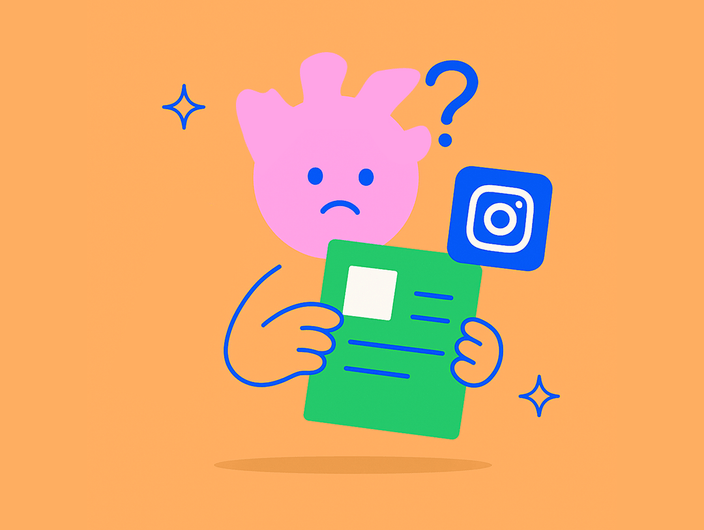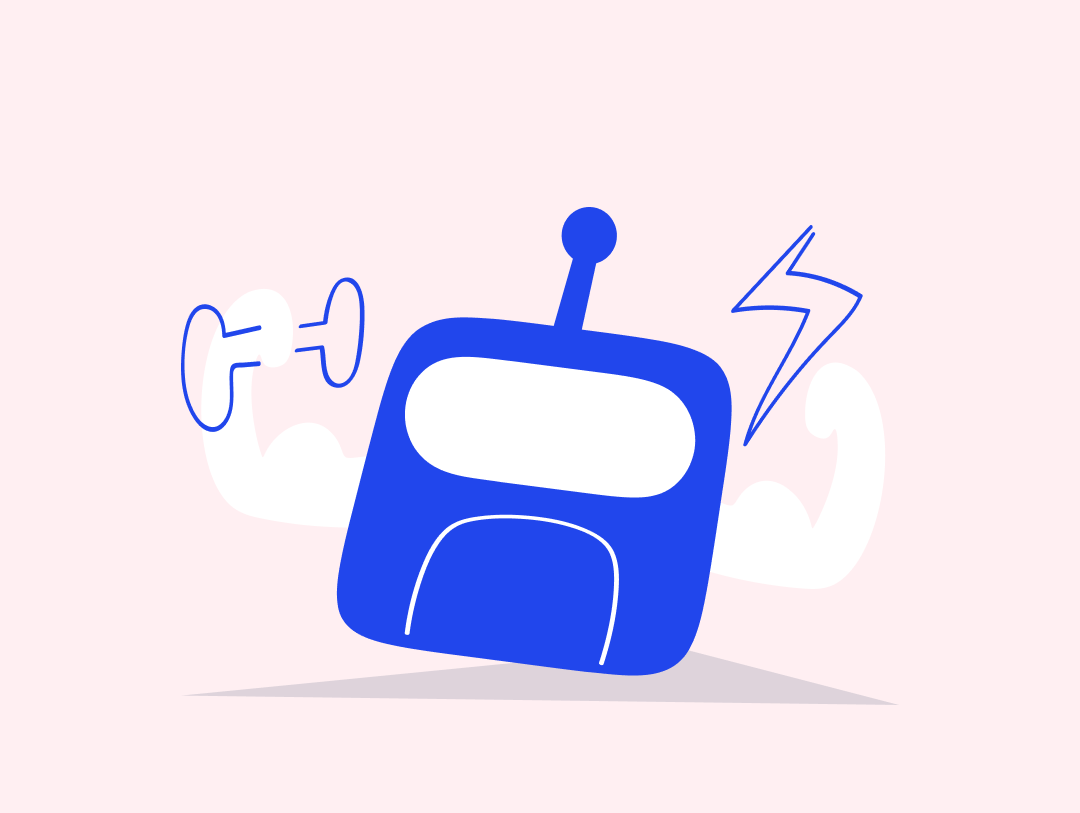At its core, UGC (user-generated content) advertising refers to a form of marketing in which content created by users, customers, or fans is leveraged (and sometimes paid for) as part of a brand’s promotional campaigns. Rather than relying solely on in-house creative assets or polished ad production, brands lean on authentic, real-world content—photos, videos, reviews, testimonials, unboxings, social posts – to fuel ads, social campaigns, and media.
You can think of UGC in two broad categories:
- Organic UGC – content spontaneously created and shared by your users or fans (without direction or compensation).
- Sponsored or paid UGC – you commission or incentivize creators or customers to create content under guidelines (e.g. “share your experience with #BrandX”) and use that content in paid placements (ads, social media posts, etc.).

The magic of UGC advertising lies in blending authenticity with strategic amplification. When done well, it bridges the gap between social proof and scalable reach.
Why UGC advertising works
Why are marketers increasingly turning to UGC as part of their media mix? Because the data backs up its impact. Below are key reasons why UGC often outperforms traditional advertising in modern settings.
1. Trust, authenticity & social proof
In an age of ad fatigue and skepticism, consumers are more likely to believe peers than brands. According to CrowdRiff, 92% of consumers trust user-generated content (or word-of-mouth) more than brand adverts. Meanwhile, 85% of consumers find UGC more influential than brand-produced photos or videos.
Stackla found that 60% of consumers say content from friends or family influences purchase decisions more than brand content.
In short: UGC delivers peer-level credibility that branded messaging often lacks.
2. Higher engagement and improved metrics
UGC tends to drive stronger engagement and better ad performance:
- Studies show UGC-based ads can achieve 4× higher click-through rates (CTR) and 50% lower cost-per-click (CPC) compared to average ads.
- When UGC is embedded into the purchase path, it yields 10% more conversions on average.
- Campaigns that include UGC often see 29% higher web conversion rates vs. campaigns or sites without it.
- On social media, mixing UGC with branded content can increase overall engagement by 28%.
- UGC campaigns often produce 50% lift in engagement.
These figures reflect that UGC doesn’t just add authenticity – it enhances ad performance in measurable ways.
3. Efficiency & cost advantage
Producing high-quality visual content (photo shoots, video production, editing) is expensive and time-consuming. UGC lets brands co-opt content created by users – reducing production costs and increasing scale.
- UGC can help brands save on a dedicated content creator salary.
- Bazaarvoice reports that ads featuring UGC achieve a 50% reduction in cost-per-click vs non-UGC ads.
- Many marketers (≈ 93%) who use UGC claim it performs significantly better than purely brand-generated content.
Because UGC production is typically lighter (no expensive shoots, less overhead), you can scale creative assets more easily.
4. Amplification & network reach
When users share content that tags or mentions your brand, your reach grows via their networks. Each piece of UGC becomes an ambassadorial touchpoint. You essentially harness users’ social graphs as distributed ad extensions.
5. SEO, discoverability, and content volume
UGC helps diversify your content footprint online, which can improve SEO and organic visibility.
- A quarter of brand search results for major brands are UGC links.
- On websites, visitors spend 90% more time where UGC galleries are present.
- Including UGC can increase returning visitors, too.
Thus, UGC helps with both paid and organic discovery.
Benefits of UGC advertising for brands
Putting the “why it works” into benefits for brands, here’s what UGC advertising delivers in practice:
- Enhanced trust & credibility: real people = real proof. Helps reduce skepticism and brand fuzziness.
- Better conversions & ROI: because UGC tends to drive better CTRs and lower CPCs, your ad spend is more efficient.
- Creative scale & freshness: you gain a pipeline of content you don’t have to fully produce in-house.
- Engaged community & loyalty: UGC invites participation, making fans feel seen, heard, and incentivized.
- Amplified reach: content shared by users taps into their networks.
- Content for multiple channels: use UGC in ads, social posts, email, website galleries, and more.
UGC vs. Influencer Marketing: key differences and how they work together
While UGC advertising and influencer marketing often overlap, they’re not the same thing. UGC comes from everyday users, customers, or fans who share their genuine experiences with a product or service. Influencer marketing, on the other hand, relies on individuals who have built a following and usually get compensated for creating branded content.
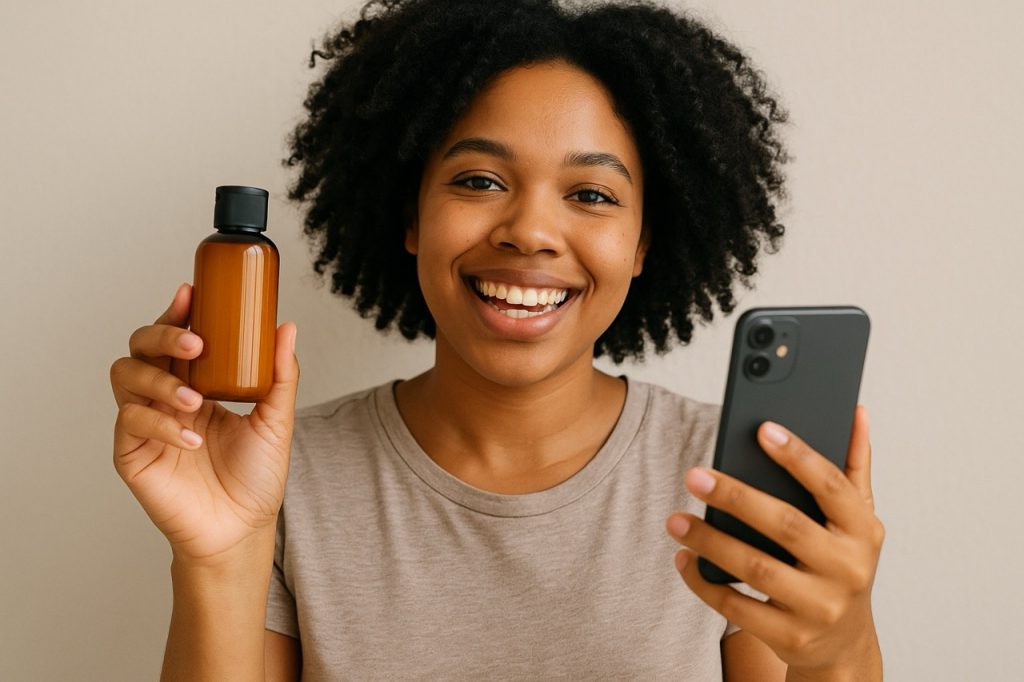
The main difference lies in who creates the content and how it’s perceived. UGC feels spontaneous and authentic because it comes from real users. Influencer content is typically more polished and controlled, since creators follow specific briefs and deliverables from brands. That doesn’t make one better than the other – just different in purpose and tone.
From a cost and scalability standpoint, UGC is often more affordable and easier to collect at scale, while influencer marketing is more curated and offers guaranteed visibility through established audiences. UGC thrives on authenticity, while influencer marketing offers reach and consistency.
In practice, smart marketers use both together. Influencers can kickstart a campaign, setting the creative tone or challenge (for example, launching a branded hashtag), while UGC fills in the community-driven momentum that keeps the campaign alive long after the initial push. When done right, influencer marketing sparks awareness, and UGC sustains it through organic participation – the perfect mix of reach and realness.
So, how to build a UGC advertising strategy
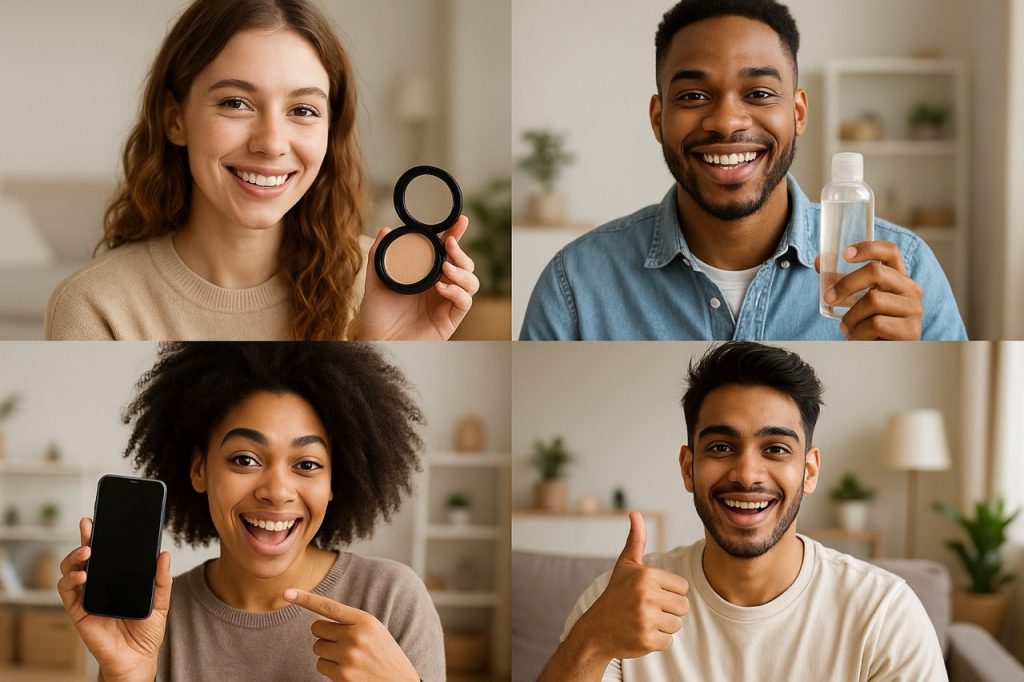
Here’s a structured approach (step-by-step) to designing and deploying UGC advertising campaigns:
1. Set clear goals & KPIs
What do you want to achieve? Examples:
- Increase conversions by X%
- Reduce CPC by Y
- Generate N pieces of content
- Expand reach in a specific segment
Setting targets helps you pick and prioritize channels, formats, and campaigns.
2. Understand your audience & platforms
Where does your audience consume content? TikTok, Instagram, YouTube Shorts, Pinterest, or a niche forum? Tailor your formats (short video, photo, reviews) accordingly.
Also, survey or research what types of UGC your audience already produces: unboxings, tutorials, reviews, lifestyle posts?
3. Create a content brief & guidelines
To get usable UGC:
- Supply theme or prompt (e.g. “show your morning routine with product X”).
- Provide creative guidelines (format, orientation, length, branding hints).
- Outline do’s and don’ts (e.g. no nudity, no overt negative commentary).
- Specify rights: you’ll need permission/usage rights to republish or amplify the content.
4. Incentivize participation
Users will be more motivated if there is:
- A contest or prize (gift cards, discounts)
- Recognition (feature winners on brand page)
- A sense of community (e.g. “join other fans”)
- Simplicity in submission (easy upload, minimal friction)
Make the “ask” small and fun.
5. Collect, curate, and moderate
When submissions come in:
- Moderate for brand safety, off-brand content, and compliance.
- Curate the most authentic, high-potential pieces.
- Organize metadata (creator, usage rights, format) for easy reuse.
6. Amplify & distribute in ads and owned channels
Once you have UGC assets:
- Use them in paid social ads (Facebook, TikTok, Instagram).
- Blend UGC + brand content – “UGC first” ad templates.
- Post in organic feeds and stories.
- Display on your website, email, product pages.
7. Track, analyze & optimize
Essential metrics to monitor:
- CTR, CPC, CPM
- Conversion lift
- Engagement (likes, comments, shares)
- Cost per acquisition (CPA)
- Content performance by creator / format
Iterate: emphasize what works, drop what doesn’t.
8. Maintain relationships & refresh content
- Acknowledge contributors (shout-outs, credits).
- Keep prompting fresh content – periodic calls-to-action, seasonal themes.
- Rotate or retire stale content to maintain novelty.
Mistakes to Watch Out For & Pitfalls
Launching UGC advertising isn’t foolproof. Here are common mistakes to avoid:
- Using UGC without securing usage rights (always get explicit permission).
- Vague briefs or lack of creative guidance – leading to unusable submissions.
- Over-editing UGC to the point it loses authenticity.
- Over-relying on one creator or format – lack of variety.
- Neglecting performance tracking – not knowing what works or not.
- Ignoring negative or off-brand content that slips through moderation.
- Running one-off campaigns instead of embedding UGC into ongoing content strategy.
Examples of Successful UGC Advertising Campaigns
To bring these ideas to life, here are a few brands that nailed it:
Coca-Cola – “Share a Coke”
Coca-Cola replaced its logo with names and encouraged consumers to share photos of “their” Coke on social media with #ShareACoke. Over 500,000 photos were shared globally, and the campaign drove measurable uplift in engagement and sales.
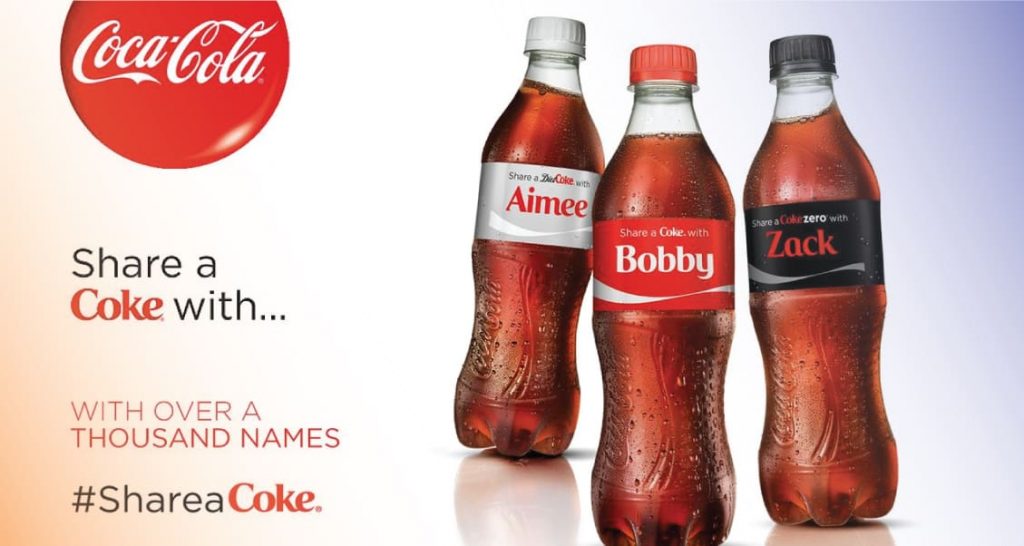
Starbucks – White Cup Contest
Starbucks invited customers to doodle on the brand’s iconic white cups and submit designs. Winners were featured by Starbucks itself. This campaign generated considerable earned media and hype.
IKEA (via Social Native platform)
IKEA saw 3.54× higher conversion rates and 2.7× greater engagement by leveraging UGC in targeted local campaigns.
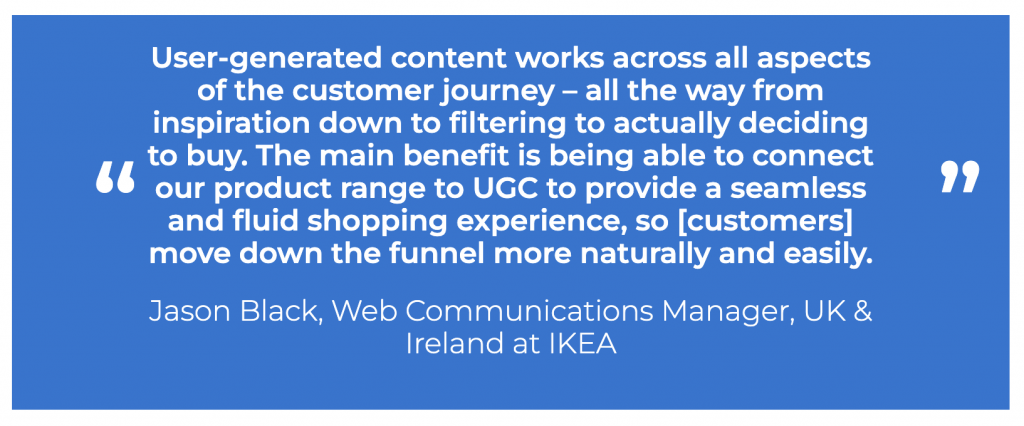
Lush / Glossier
Beauty and lifestyle brands like Lush or Glossier often repost fan photos and testimonials as central pillars of their brand identity – turning customers into ambassadors.
And what’s the role of AI & the future of UGC advertising
As UGC adoption rises, AI is increasingly woven into the process. Here’s how:
- Content Moderation & Filtering: AI can automatically filter submissions based on brand rules, detect profanity, off-brand logos, and more.
- Metadata & Tagging: Generative AI can produce smart metadata (titles, tags) that improve discoverability and matching – in one experiment, AI-generated video titles increased valid watches by up to 7.1 % when adopted.
- Content Matching & Personalization: AI helps match UGC to specific audience segments or ad placements to maximize relevance and performance.
- Idea generation & creative augmentation: Suggesting prompts, remixing UGC, or even AI-assisted enhancement while preserving authenticity (human + AI co-creation).
- Scalability & efficiency: AI helps you manage large volumes of content faster and with less manual effort.
Going forward, we’ll increasingly see video-first UGC, localized content (creator content tailored by region), and community-driven formats turning into sustained brand ecosystems rather than one-off campaigns.
So … UGC advertising is not a fad – it’s a strategic imperative. In a world saturated with ads, authenticity, social proof, and peer trust make the difference. The data is compelling: higher CTRs, lower costs, stronger engagement, and conversion lift.
But UGC isn’t “set and forget.” It requires planning: prompts, brief clarity, rights management, moderation, measurement, and refreshing the content pipeline. With the right process, UGC becomes a self-sustaining engine of authentic brand storytelling.
Of course, successful UGC campaigns don’t happen by accident. They need structure, creative direction, and smart management to keep everything on-brand and legally compliant. That’s where the right tools make all the difference. Platforms like Kontentino help marketing teams plan, approve, and organize UGC campaigns effortlessly – keeping collaboration simple and results visible.
In the end, UGC advertising is about trust, creativity, and collaboration. When your audience becomes your voice, your brand becomes something people don’t just follow – they believe in.

